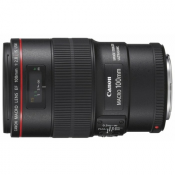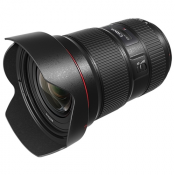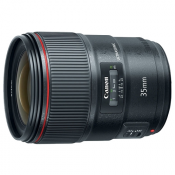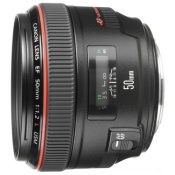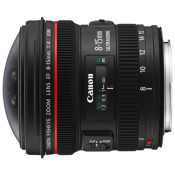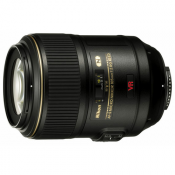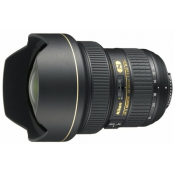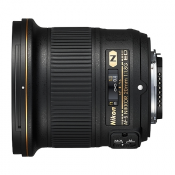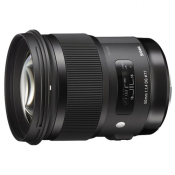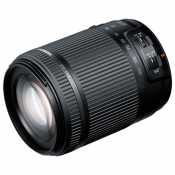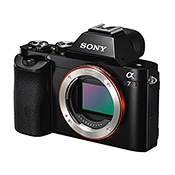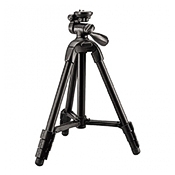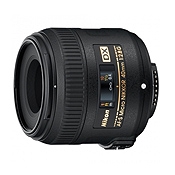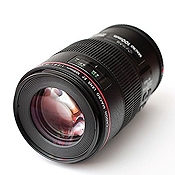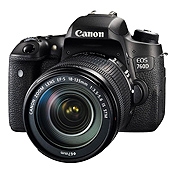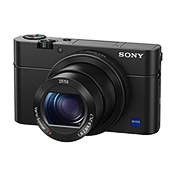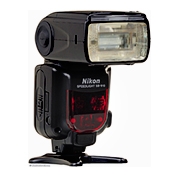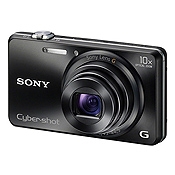Nikon 50mm f / 1.8D AF Nikkor
Short review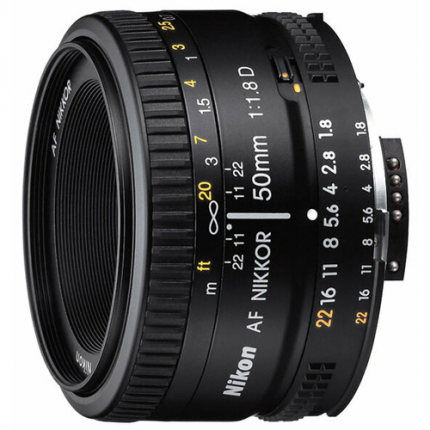
Buy Nikon 50mm f / 1.8D AF Nikkor
Nikon 50mm f / 1.8D AF Nikkor Specifications
Yandex.Market data
| Main characteristics | |
| Lens type | standard |
| Focal length | 50 mm |
| Diaphragm | F1.80 |
| Minimum aperture | F22 |
| Mount | Nikon F |
| Focusing motor | no |
| Auto focus | there is |
| Design | |
| Number of elements / groups of elements | 6 / 5 |
| Aperture blades | 7 |
| Dimensions (D x L) | 63.5 x 39 mm |
| Weight | 155 g |
| Shooting parameters | |
| Viewing angle | 46 deg.min |
| Closest focusing distance | 0.45 m |
| Additional Information | |
| Filter thread diameter | 52 mm |
Opinions from the Nikon 50mm f / 1.8D AF Nikkor
Yandex.Market data
Advantages:
- Price-quality ratio; - For my taste, a very nice pattern and bokeh; - Compact, with a light block of movable lenses, which is why a screwdriver of any, even relatively cheap carcasses (where it is, of course) copes with focusing no slower and no worse than the built-in motor in af-s versions of fifty dollars; - He's not G-type, i.e. it HAS a diaphragm ring, and yes, I think it's a big plus, because firstly, you can put the lens on classic film carcasses (such as FE, FE2, FM, FM2, FM3a and a number of others) and through a special small window above the main field of the viewfinder you will see the aperture numbers printed on the ring in an analog view. Secondly, you will be able to use a lens with uncoated extension tubes or bellows (as opposed to the same G strip). Thirdly, what the hell is not joking! - easily put it through the adapter on the enemy's kenon carcass, and if your adapter is cheap and not chipped, you can again change the value of the hole mechanically.
Disadvantages:
- Someone complains about the slight effect of "nuts" in the bokeh, which, of course, sometimes takes place. But as someone correctly put it - it would cost 5 times more, and its bokeh would not be called "nuts", but "a characteristic pattern for connoisseurs." I agree 100% - no need to invent reasons for stress from scratch. If you don't look at the tests, but just shoot them - you won't notice any nuts in your life on real plots; - Smoother body than older brothers, it is easy to leave a noticeable scratch. Corrugated cases with a large texture are certainly better in this sense. The rest of the plastic construction does not float at all and does not affect the quality of the pictures.
Comment:
If you are not the unhappy owner of one of the screwless junior models of cameras, then do not bother yourself with the need to buy af-s fifty dollars. This motorless, due to its compactness, focuses just as quickly and accurately, but much more versatile for both macro and film, and even cheaper than the motor version, besides. If you are a completely newbie and want to finally take the first fix in addition to the annoying whale zoom - take this one, there is nothing to think about. For this money, he gives phenomenal results and the opportunity to get one of the most popular focal ones in his fleet of optics for almost nothing.
17 February 2012
Advantages:
-Price -Beautiful bokeh -Very serious sharpness at 2.8 and above -Fast focusing -Easy
Disadvantages:
-The build quality (it is not ideal, but quite suitable, but since all the disadvantages must be indicated, I will write it as it is). -XA on the open when shooting contrasting objects
Comment:
Everyone writes about ugly chopped bokeh. I don't know, I really like bokeh. If you do not engage in photoonanism and look at the pictures pixel by pixel, then you will never notice the so-called "nuts" in your photos.I don't understand those people who attribute the lack of a built-in focusing motor to the disadvantages. This is a technical feature of this lens. The same thing, if we attribute to the disadvantage of the car's manual gearbox, instead of the automatic one. Carefully read the specifications and compatibility of your carcass with non-motorized glasses. I carefully checked the front / back focus before buying. Photographed on a target, then took a photo of my girlfriend's eyes. Strikes right on target. When the aperture is open, the lens gives a nice soft effect, which is great for portraits. I was very surprised at the sharpness of the lens for the money. I didn’t notice so many pimples on my beloved’s face before I took her photo at 3.5)). There was an idea to buy Helios 81n, but when I tried and felt what a manual optics is, I realized that it was not mine. By the way, g81N costs 2500, and I bought Nikon 50 1.8d for 3400 in amazing condition (used). Of course you think, but I am very glad that I did just that. Summing up, I can say that for ridiculous money you will get a lens that will work out its value by 200%. If anyone is interested, I have a Nikon d7000 carcass. I apologize for the confusion. All good.
May 19, 2013, Tambov
Advantages:
- Price (bought in a well-known online store, with delivery to my city, something came out about 4 tr.) - Aperture ratio - Light and compact
Disadvantages:
- "nut effect" on light sources or glare behind the DOF - slight play of the focusing ring (not critical)
Comment:
I bought this lens together with Nikon D7000, count on delivery (compared to the price of a carcass). Why did you buy it? - 50 mm - almost a portrait lens on a crop. I have a Nikon 35mm f / 1.8G AF-S DX Nikkor in use, you can't take pictures of portraits, I took a fifty-kopeck piece to try - I won't like replacing it with 85 mm (with a surcharge). Comparing with the Nikon 35mm f / 1.8G AF-S DX Nikkor - the non-motorized half-lens focuses quickly, but slower - the background on the open blurs more interesting, the "nut effect" personally does not cause any dislike to me, I regard it as a feature of this glass - at f4, the sharpness tin (excuse me my Russian) - very good portraits are obtained on the open, the depth of field on the open is small, you have to be very good. attentive Well, while I wrote everything that I noticed, later I will add my observations. update: the excitement subsided after a longer familiarization with this lens and its comparison with the Nikkor AF-S 35mm 1.8G. and there are a couple of reasons 1- Nikkor AF-S 35mm 1.8G - gives richer and more vivid color, better contrast in the same shooting conditions. 2 - Nikkor AF-S 35mm 1.8G is sharper on the open, especially at the edge of the frame ... well, and one more nuance - it's not very convenient for me to shoot face portraits at 50 mm, but for the waist-length I use 35.As a result, Nikkor AF-S 35mm 1.8 G for me personally is much more convenient and versatile. 50 kopecks for sale)). In no way do I pretend to be the "opinion of the last resort" I just present my observations for potential buyers / users. Sample photos can be viewed in my Yandex.Photos albums. As a conclusion: take the camera with a screwdriver taking into account your preferences for FR, the price / quality of the picture is very good.
12 August 2012
Advantages:
Fits perfectly on the D7000. Fast focusing. Great drawing. Working 1.8. Combination of lightness and strength. Quiet operation with a screwdriver.
Disadvantages:
There are no drawbacks, well, if only the equipment could be richer (no hood, no cover).
Comment:
A great way for little money to look at the world of photography with different eyes. 150 ye is a normal price, excellent price-quality ratio. Worth every penny invested. After the whale 18-105, you have to revise the camera's capabilities for the better. Works with a screwdriver (D7000) quickly, clearly and quietly.I am completely satisfied with the purchase.
September 23, 2011
Advantages:
Aperture ratio. Reliability. Compactness. Light. D-processor. Sharpness. The front lens is deeply recessed, so it is absolutely unnecessary to use the filter protector.
Disadvantages:
There is no motor of its own. At a fully open aperture, chromatic aberrations are quite noticeable when shooting contrasting objects. Occasional focusing errors.
Comment:
Overall, this is a wonderful lens. Small chromatic aberrations at open apertures are only noticeable at high magnification, so this is nonsense. It's the same with a little obscurity. Of course, not the standard FR on the crop is not a lack of the lens. The processor practically eliminates exposure errors when using the matrix mode on the camera. Focusing errors, in most cases due to the cheap construction of the camera screwdriver drive. On closed diaphragms it is very sharp, already "rings". It makes no sense to complain about the noise when focusing, because this is due to the camera motor and the screwdriver drive. I think the more advanced the camera, the faster and more accurate focusing. PS Do not consider it as an amateur discard glass, until better times. You can and should shoot with it! Good luck!
January 11, 2009
Advantages:
Aperture, clarity, color rendition, autofocus, weight, size
Disadvantages:
autofocus will only work on cameras with a screwdriver (built-in camera motor)
Comment:
- An excellent lens for every day for a full-frame camera (FX), the camera with it becomes smaller, lighter, more convenient and, as a result, is more often with itself)) - Clarity starts from f / 2.2; At f / 5.6, the clarity is like shoving a piece of the world into a scanner. At f / 1.8 it is the same sharp, but in the DX area. Contrast and saturation drop after f / 16, you can shoot at f / 22, but in extreme and special cases. - The autofocus on the D700 is very fast and does NOT miss in any light. My copy turned out to be with 12 front focus, corrected in the camera) Before that, I thought the same that up to f / 2.8 it was not clear - it turned out to be clear, I just had to correct the front focus;) - Focal length for FX !!! the device is optimal for 80% of shots. Taking into account the fact that the lens gives geometrically correct photographs, it is the most convenient for panoramas and technical filming (if a wider angle is needed, then several frames are taken with a fan and then at home it is stitched through hugin in half a minute) - There is no hood and is not needed. the lens is recessed, as a result, it is not necessary to carry and wear it - chromatic aberrations - conditionally we can assume that there is no - distortion - we can assume that there is no - colors and contrast are soft, it feels softer than in 1.8G - bokeh - probably there are nuts, but nowhere they are not visible))) If at these dimensions an aspherical lens would have been pushed into it like in 1.8G, then probably no one else would have bought the lenses
May 15, 2014, St. Petersburg
Advantages:
Price, aperture, sharpness.
Disadvantages:
If you adjust the camera, they will not appear.
Comment:
Bought to take pictures of the baby, no flash. From a flash, they have clouding of the lens and other troubles. So, in order not to write too much: I also thought that his sharpness begins with aperture 4, etc. You just had to adjust the back focus in the fotik. The fact is that at 1.8 aperture there is a very shallow depth of field, and the slightest mistake leads to blurring. Now at 1.8 everything is fine. So, before you scold, check your camera + lens bundle. I myself shot for several years with other lenses (not so fast) and did not even know about such a problem. Fotik d50.
October 22, 2010
Advantages:
Lightweight and sharp.Sharpness at 4-5.6 is quite high, above 2.0 is quite sufficient. At the maximum opening of the aperture, the picture is quite clear, but flexible. High contrast and excellent color reproduction. At the same time, despite the overall sharpness (medium and large radius of details), the resolution of the thinnest lines seemed to me insufficient, this factor can be critical where they need to be worked out. The price / quality ratio is the highest possible for an autofocus lens. In terms of sharpness and blur, there are a lot of different good lenses from previous years of production at a price similar to today, but they are all manual.
Disadvantages:
Disadvantages are the flip side of the advantages that the design of this lens gives. Unevenness of sharpness across the frame, maximum in the center, then a significant drop to the periphery, even with closed apertures. The already noted weakness in the transmission of the finest details. Drawing in the field of focus is quite simple and crude, not for any plot. Nevertheless, despite its specificity, it can be used for artistic purposes, because it has a distinct mood. Chromatic aberrations are slightly above average, but for most subjects their effect on the picture is either insignificant or undetectable at all. In fact, when using CA correction and vignetting with a camera or in a raw converter, this factor does not matter.
Comment:
Bokeh has a fickle character, plastic, but generally quite nervous, impulsive strokes that can be more disturbing or calmer, softer, but not without some dynamism - depending on the degree of closure of the diaphragm. At 1.8 blurs the background well. Thus, the photographer gets a rather powerful, with skillful use, expressive tool that can emphasize the idea of the frame (if any). Reckless use of a lens, especially on inappropriate scenes, can be frustrating and annoying. Due to its price and widespread presence in the market, this art tool is a reliable tool for the photographer who has a taste and his own vision. The most expressive use can be at open aperture. They write that the AF-S 50mm 1.8 G is a version of this lens, only with an ultrasonic motor. In fact, this is not so - there are differences in the optical scheme, an additional aspherical element has been added to the rear lens group, which improves the picture of sharpness. There is also a smoother blur, but the range of expressive capabilities of the lens as an artistic medium, in my opinion, is significantly reduced.
June 7, 2012
Advantages:
1) price 2) aperture 3) lightness 4) very sharp with f / 2.5 5) compactness 6) metal mount 7) good build
Disadvantages:
XA at 1.8 - 2.0 lack of autofocus on lower models (I use D3100), but for such a price this is not a drawback
Comment:
Excellent high-aperture lens, stuck on the camera for a long time =)
September 1, 2011
Advantages:
This is one of the two best fixes for beginner photographers (only 35 1.8G is even better for a crop newbie): - The cheapest on the system. In bu is cheaper than any other fixes. Anyone can afford to buy it and check out what these quality fixes are. - Oddly enough, one of the sharpest on the system if it is closed from 2.8 onwards. From f4 to about f11, the sharpness is enough to resolve even a 30MP matrix. Even the crops. - For normal working specimens, you can remove portts from 1.8 - soft but quite moderate - aperture 1.8 (light transmission, respectively, somewhere t2.0) for $ 100. Usually, such cheap fixes already have 2.8 - Aperture ring. Will work with the cheapest macro rings or bellows without electronics inside, through cheap adapters it will fit on any bzk and even on zk kenon (newfangled G versions will not be, or a special more expensive G adapter is needed). - Smallest and lightest on the system. Takes up almost no space in your bag. - A screwdriver but very smart af (sincevery light) - Very common, you can always find one at your local photo flea market - And cheap again. It is not a pity to take with you in the most cruel conditions)) - The most pop and cheapest filter diameter of 52mm - FF coating - Reliable and durable. Mine is more than 10 years old already, it works like a new one and hasn't worn out too much.
Disadvantages:
- Requires a screwdriver. Those. there will be no AF on the younger 3xxx and 5xxx carcasses. - Softit on the open. The software is not deadly but distinct. It is better to cover until at least 2.2 - The manual focus ring is narrow and light. Manual focus leaves much to be desired in comparison with other options.
Comment:
In terms of price / quality ratio, it is an absolute leader. For $ 100 you can get one of the best lenses for zc systems. I have both 1.4D and 1.4G fifty dollars, I know what I'm talking about. It could cost one and a half to two times more and would still remain moderately popular (since one of the sharpest on the system in general). It even slightly outperforms the more expensive 1.8G, 1.4D and even 1.4G bands in terms of sharpness two to three times! (but inferior to the edges of the frame). This is a great choice for beginners to "try" - cheap, easy to buy, and if something goes wrong, it is easy to sell later for the same money for which you bought.
May 19, 2016, St. Petersburg
